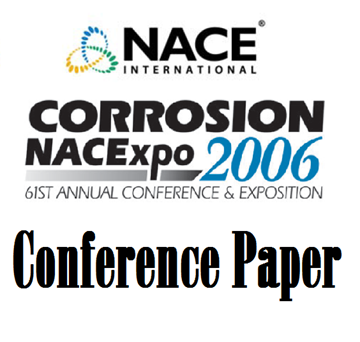Search
09362 Understanding Inhibition of Sour Systems with Water Soluble Corrosion Inhibitors
Also Purchased
05569 The Application of Process Analyses to Prevent Corrosion in Sour Water Stripper Overhead Cooler Tubes
Product Number:
51300-05569-SG
ISBN:
05569 2005 CP
$20.00
06576 PREDICTION AND ASSESSMENT OF AMMONIUM BISULFIDE CORROSION UNDER REFINERY SOUR WATER SERVICE CONDITIONS
Product Number:
51300-06576-SG
ISBN:
06576 2006 CP
Publication Date:
2006
$20.00
09337 Evaluation of Prediction Tool for Sour Water Corrosion Quantification and Management in Refineries
Product Number:
51300-09337-SG
ISBN:
09337 2009 CP
Publication Date:
2009
$20.00




